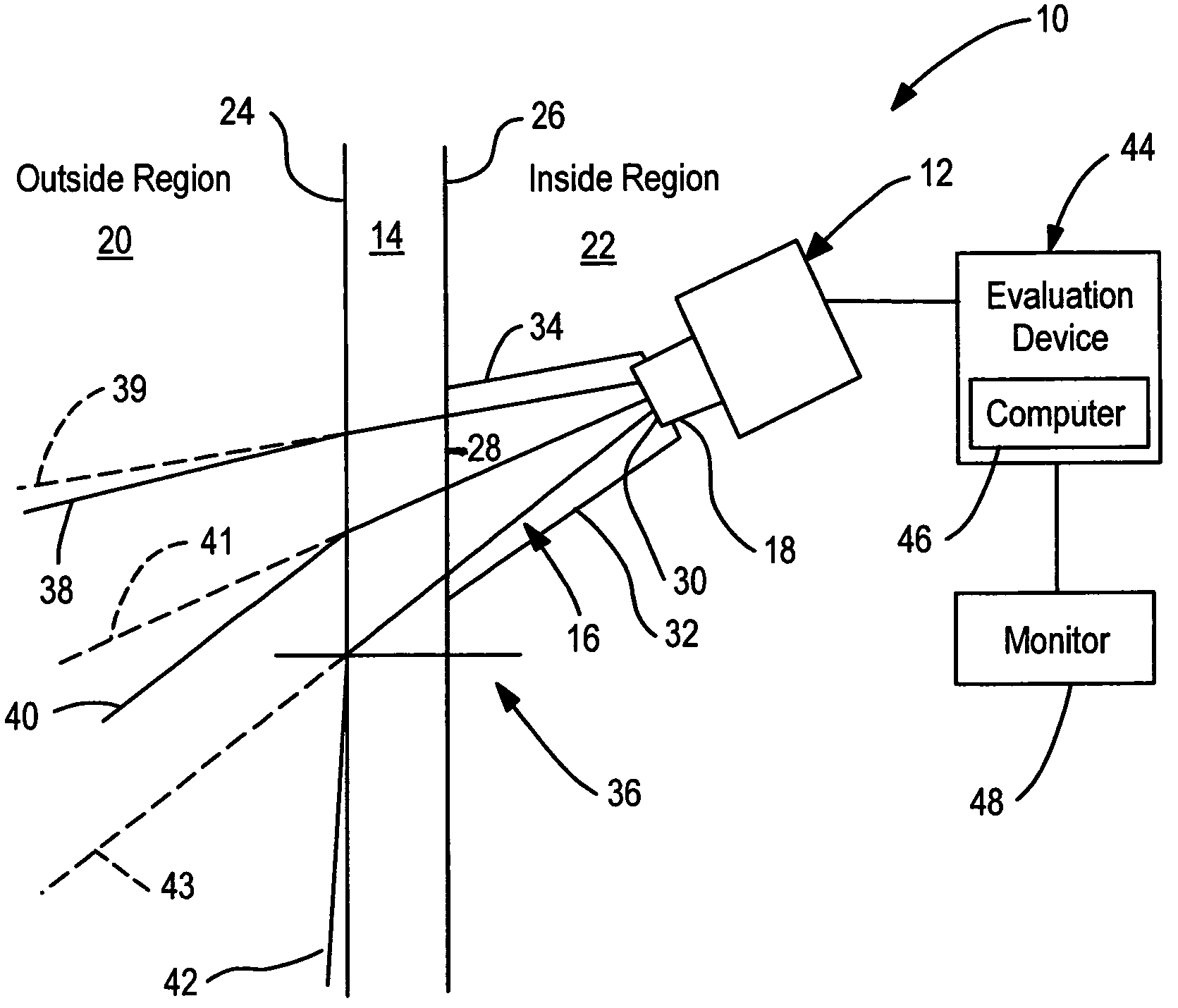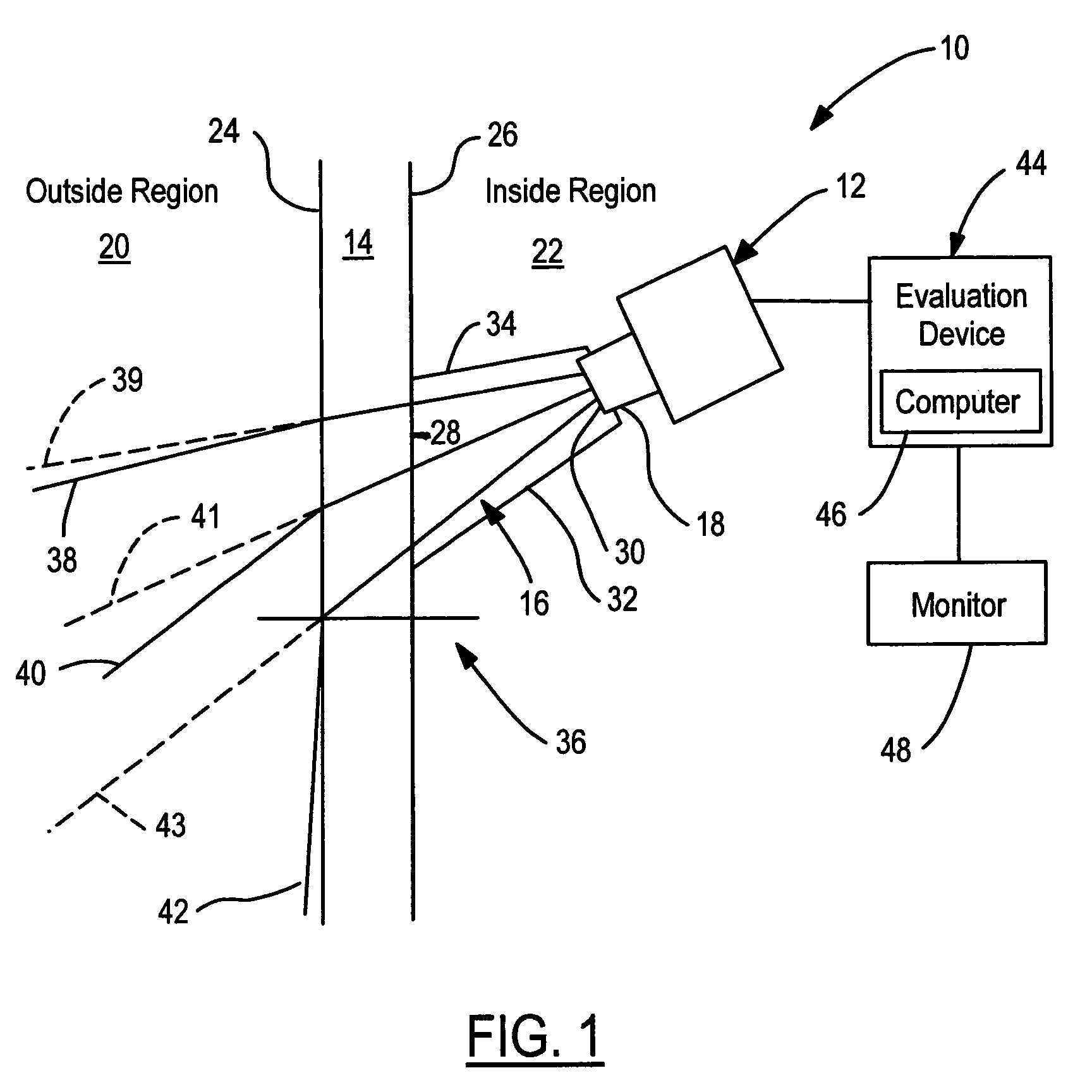Camera arrangement behind an inclined pane
a technology of panes and cameras, applied in the field of camera arrangements, can solve the problems of inability to align the camera and the camera cannot detect, and achieve the effect of reducing the blind angl
- Summary
- Abstract
- Description
- Claims
- Application Information
AI Technical Summary
Benefits of technology
Problems solved by technology
Method used
Image
Examples
Embodiment Construction
)
[0016]Referring now to FIG. 1, a schematic representation of a camera arrangement 10 in accordance with an embodiment of the present invention is shown. Camera arrangement 10 includes a camera 12, a pane 14, and a light-guiding element 16. Camera 12 includes a lens 18. Pane 14 separates an outside region 20 from an inside region 22. Pane 14 has an outer surface 24 facing outside region 20 and an inner surface 26 facing inside region 22. Outer and inner surfaces 24, 26 of pane 14 are parallel to one another such that pane 14 is a flat parallel pane. Pane 14 may be a window pane of a vehicle or a building.
[0017]Camera 12 is arranged in inside region 22 with camera lens 18 being oriented in a slanted direction towards pane 14. Light-guiding element 16 is arranged between camera 12 and pane 14. Forward side 28 of light-guiding element 16 is connected to inner surface 26 of pane 14 and opposite rearward side 30 of light-guiding element 16 is connected to camera lens 18. The connections ...
PUM
 Login to View More
Login to View More Abstract
Description
Claims
Application Information
 Login to View More
Login to View More - R&D
- Intellectual Property
- Life Sciences
- Materials
- Tech Scout
- Unparalleled Data Quality
- Higher Quality Content
- 60% Fewer Hallucinations
Browse by: Latest US Patents, China's latest patents, Technical Efficacy Thesaurus, Application Domain, Technology Topic, Popular Technical Reports.
© 2025 PatSnap. All rights reserved.Legal|Privacy policy|Modern Slavery Act Transparency Statement|Sitemap|About US| Contact US: help@patsnap.com


